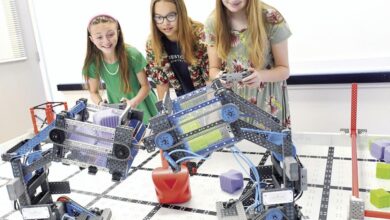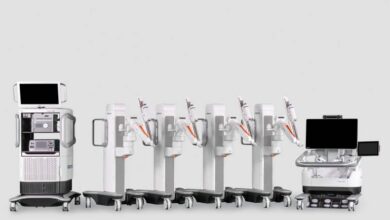The March of Humanoid Robotics: Anhui’s Ambitious Plan

Integrating cutting-edge technologies such as artificial intelligence, high-end manufacturing, and advanced materials, humanoid robots are on the brink of revolutionizing our way of living and working, akin to the impact of computers, smartphones, and electric vehicles. Aiming to position itself at the forefront of this transformative shift, Anhui province has unveiled an industrial development initiative titled the “Anhui Humanoid Robot Industry Development Action Plan (2024–2027).”
This proposed blueprint underscores Anhui’s aspiration to establish Hefei as a research, development, and application hub, with Wuhu becoming the central production site for essential robot components by 2027. At present, Anhui boasts 11 research teams within universities and a network of 21 companies that contribute to the humanoid robot industry, indicating a robust foundational base for the complete machines, crucial components, and AI algorithms.
The plan details three focal points for industry evolution: optimizing complete machine development by creating multi-modal large-scale robots for a variety of functions; leveraging Anhui’s unique strengths to hone specialized capabilities such as the robot’s “brain,” “cerebellum,” and limbs; and concentrating on high-end components like decelerators and batteries to address current weaknesses through strategic partnerships and talent acquisition.
Financial support frameworks also form a key part of the strategic agenda. Anhui proposes the establishment of a dedicated humanoid robot sub-fund with an initial amount of no less than 500 million yuan. This fund will be a collaborative effort involving provincial investment companies, municipal state assets, and industry players, primarily nurturing incubation projects that target key components and shared technologies.
It’s not just Anhui in the race; Beijing, Shanghai, and Hebei are also leveraging funds and talent recruitment to grow their humanoid robot industries. Metro centers like Shanghai are establishing joint national robotics innovation centers, while colossal investment funds in Beijing foster the rise of robotics in sectors like healthcare and logistics.
While interest and investment surge, surmounting technological hurdles remains a mission critical to transforming humanoid robots into a mature, commercially viable sector. With initiatives like Anhui’s action plan in motion, China is making strategic moves to conquer this frontier.
Most Important Questions and Answers:
– What is the significance of Anhui’s plan?
Anhui’s strategic action plan is important as it represents a concentrated effort by a regional government to establish itself as a leader in the emerging humanoid robot market. By focusing on the development of high-tech components and fostering innovation, Anhui seeks to transform its economy and set a precedent within the industry.
– What are the key challenges facing humanoid robotics?
Key challenges include technological complexities, high production costs, ethical considerations, and integration into society. Humanoid robots require advanced AI, precise mechanics, and substantial research and development investment. There is also ongoing debate over the displacement of human workers and the appropriate use of such robots.
– What are the controversies associated with humanoid robotics?
Controversies often revolve around job displacement, data privacy, and potential misuse of AI. Ensuring that robots behave ethically and do not infringe upon human rights is a public concern, as well as the long-term societal impacts of widespread robotic integration.
Advantages and Disadvantages:
Advantages:
– Economic Growth: Investment in humanoid robotics can lead to the creation of high-tech jobs and industries.
– Innovation Boost: Encourages the development of cutting-edge technologies and can position Anhui as a leader in the robotics field.
– Improved Efficiency: Humanoid robots have the potential to perform tasks more efficiently and accurately than humans in certain settings.
Disadvantages:
– High Costs: Research, development, and production of humanoid robots require substantial financial investment.
– Job Displacement: The rise of robotics could lead to the reduction in demand for human labor in certain industries.
– Societal Impact: Unease about robots becoming too integrated into human life and the potential loss of certain human skills.
For related information, here are some relevant links to explore further:
– AI Superpowers – Information on how AI and robotics are shaping global economic power dynamics.
– IEEE – The Institute of Electrical and Electronics Engineers, a professional association for advancing technology.
– Robotics Industries Association – Industry information on the growth and development of robotics, globally.



